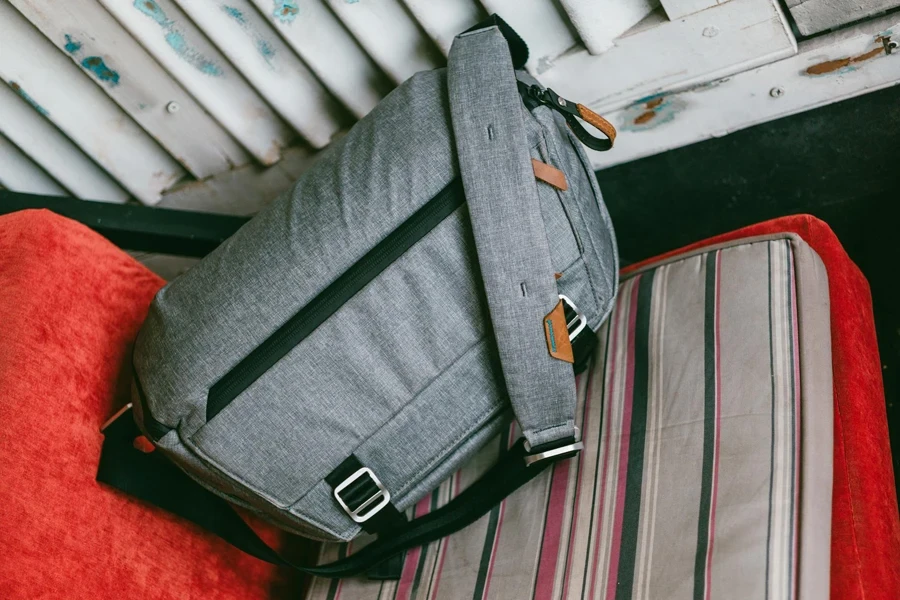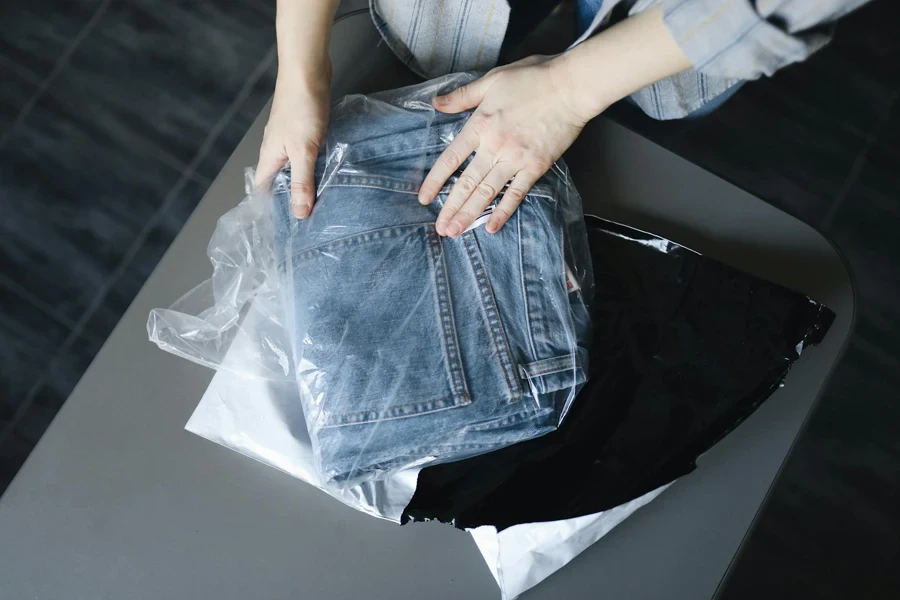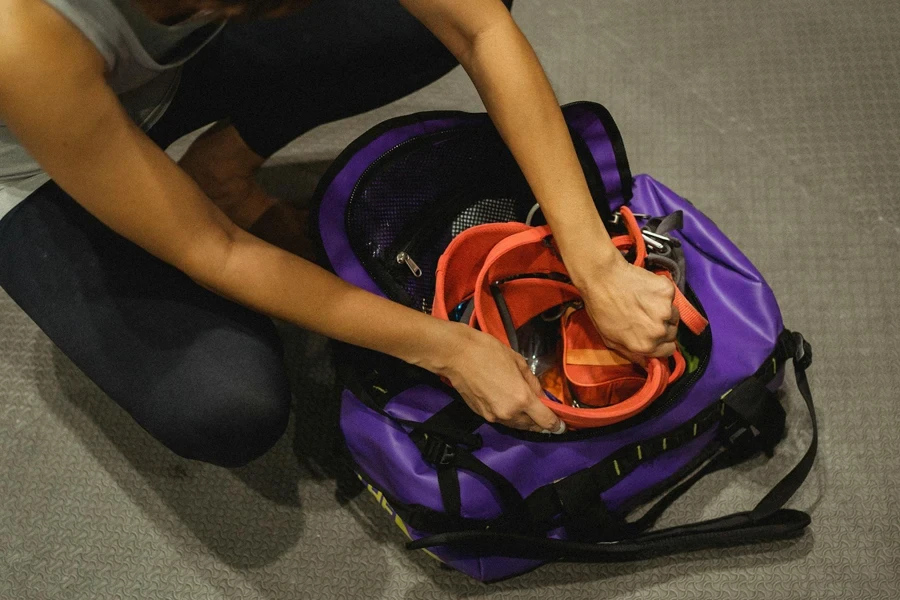Table of Contents
● Introduction
● Market overview
● Different types and their features
● Things to consider when selecting products
● Conclusion
Introduction
Storage bags are essential for maintaining order, providing effective solutions for food preservation, travel packing, and more. The expanding market for storage bags highlights the importance of understanding various options and features available. Key trends in the market, such as sustainability and technological advancements, influence purchasing decisions. With numerous types tailored for specific needs, selecting the right storage bag ensures efficiency and protection. Insight into material choices, durability, and special features is crucial for making informed selections in this diverse market.
Market overview

Global market scale
The global market for storage bags is projected to generate $48.86 billion in revenue in 2024, according to Statista. This market is expected to grow at a compound annual growth rate (CAGR) of 3.79% from 2024 to 2028, reaching an estimated $56.69 billion by the end of this period. This growth is driven by increasing consumer demand for effective storage solutions and advancements in bag materials and design.
Regional market share
Regional market shares indicate that the United States leads with a projected revenue of $6.421 billion in 2024. Other significant markets include Europe and Canada, each contributing to the global revenue with their increasing demand for both luxury and functional storage bags. The per capita revenue for storage bags worldwide is estimated to be $6.31 in 2024, reflecting widespread adoption across different regions.
Market changes and influences
Several factors influence market changes, including the rising popularity of luxury handbags in markets like France, where craftsmanship and heritage brands are highly valued. Additionally, there is a growing emphasis on sustainability, with consumers seeking eco-friendly and reusable storage bag options. Technological advancements also play a crucial role, with innovations in materials and manufacturing processes enhancing the durability and functionality of storage bags.
Different types and their features

Vacuum storage bags
Made from multi-layer polyethylene and nylon, vacuum storage bags are designed to withstand the pressure of air removal. These bags typically feature a double-zip seal and a one-way valve to ensure a secure airtight seal. The thickness of the material, often measured in microns, can range from 70 to 90 microns, providing robust protection against punctures and ensuring long-term storage.
Clothes storage bags
Clothes storage bags are often crafted from non-woven fabric, canvas, or cotton. These materials are breathable, preventing moisture buildup and mold growth. Some bags include transparent vinyl windows for easy identification of contents and reinforced handles for durability. Sizes can vary from small bags for individual garments to large under-bed storage bags capable of holding multiple items.
Ziplock bags
Ziplock bags are made from low-density polyethylene (LDPE) and feature a double-track zipper closure system to ensure an airtight seal. They come in various sizes, from small snack bags to large gallon-sized bags. The thickness of these bags typically ranges from 1.5 to 3 mils, providing a balance between flexibility and durability for everyday use.
Space-saving bags
These bags are made from multi-layer nylon and polyethylene, similar to vacuum storage bags, but with additional features like roll-up valves or compression zippers. The materials are designed to be puncture-resistant and moisture-proof. Some space-saving bags include antimicrobial coatings to protect contents from bacteria and mildew during long-term storage.
Luggage and travel bags
Constructed from materials such as ballistic nylon, polyester, and polypropylene, luggage and travel bags are designed for durability and resistance to abrasion. Features often include reinforced stitching, expandable compartments, and integrated locks. High-denier fabric (600D to 1680D) is used to ensure strength and tear resistance, while wheels and telescopic handles enhance mobility.
Food storage bags
Food storage bags are made from food-grade polyethylene and are often BPA-free to ensure safety. They feature leak-proof seals and can be found in various forms, such as freezer bags, which are thicker (3 to 4 mils) to withstand freezing temperatures without cracking. Some bags are also microwave-safe and include steam vents to allow for reheating.
Things to consider when selecting products

Purpose identification
Determining the primary need for storage bags is crucial for selecting the right type. For instance, storing food requires bags with airtight seals to preserve freshness, while organizing seasonal clothing might need breathable fabric bags to prevent mold. Identifying whether the bags will be used for travel, waste management, or long-term storage can help narrow down the options and ensure the chosen product meets specific requirements.
Material selection
The choice of material impacts the bag’s durability, flexibility, and environmental footprint. Plastic bags, made from polyethylene, offer waterproof protection but vary in durability. Silicone bags are reusable and heat-resistant, making them ideal for food storage and cooking. Fabric bags, such as those made from cotton or canvas, are breathable and suitable for clothing or delicate items. Nylon bags are durable and water-resistant, perfect for travel or outdoor storage. Each material has its pros and cons, which should be weighed according to the intended use.
Size and capacity
Selecting the right size ensures efficiency and flexibility in storage. Storage bags come in various sizes, from small pouches for jewelry to large bags for bedding. Choosing a size slightly larger than needed can provide additional flexibility and prevent overfilling, which can strain seals and reduce the bag’s lifespan. Considering the volume of items to be stored and the available storage space is essential for optimal organization.
Seal strength
The type of seal determines the bag’s suitability for different uses. Zip seals are quick and convenient for everyday use, while slide seals offer a stronger, more reliable closure, ideal for liquids or items prone to spilling. Vacuum seals provide an airtight environment, preserving the contents and reducing their volume, making them perfect for bulky items like clothing or bedding. The choice of seal should align with the specific storage requirements to ensure maximum efficiency and protection.
Durability and thickness
Durability is influenced by the material’s thickness and construction. Heavy-duty bags with increased thickness are essential for storing sharp or heavy items, preventing punctures and tears. For everyday storage or lightweight items, standard bags may suffice. Considering the expected wear and tear, as well as the conditions in which the bags will be used, can help in selecting a product that offers the necessary durability and longevity.
Special features
Additional features can enhance the functionality and convenience of storage bags. Expandable bottoms allow bags to stand upright, useful for storing liquids or bulkier items. Labels or writable surfaces facilitate organization by allowing users to mark contents or expiration dates. Tinted or opaque bags offer privacy, making them ideal for storing personal items or gifts. Customizable designs, such as bags with personalized prints or logos, can cater to specific business or personal needs.
Environmental impact
Eco-friendly options include biodegradable bags made from plant-based materials and reusable bags made from durable materials like silicone or fabric. Choosing environmentally friendly bags can reduce waste and minimize the ecological footprint. Considering the lifecycle of the bag, from production to disposal, can help in selecting sustainable options that align with environmental goals.
Conclusion

Storage bags provide versatile and efficient solutions for various needs, including household organization, travel, and food storage. Understanding the latest market trends, different types of bags, and key selection criteria helps businesses make informed decisions. By choosing the right storage bags, companies can enhance their operational efficiency and contribute to sustainability goals.




